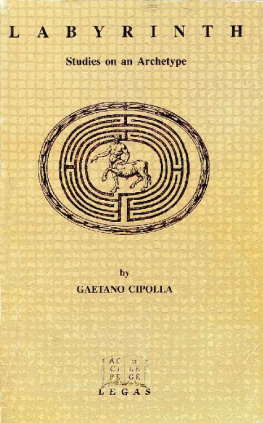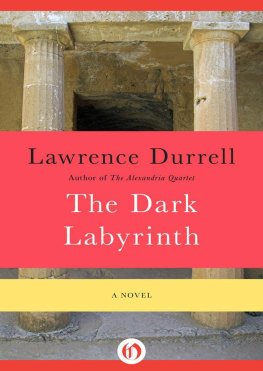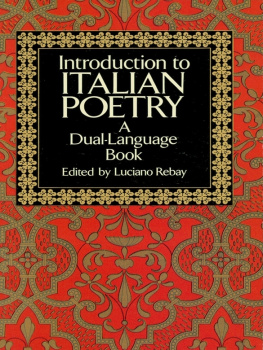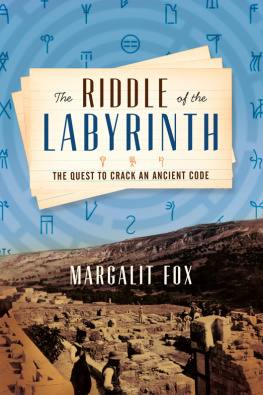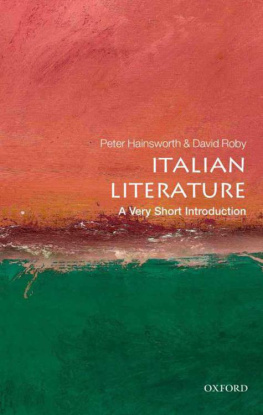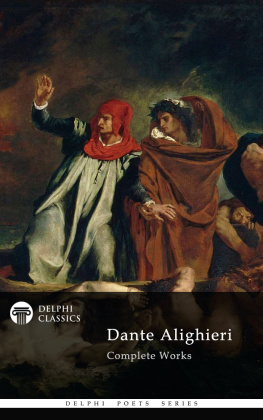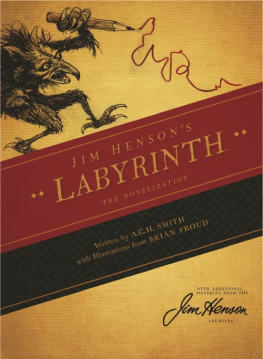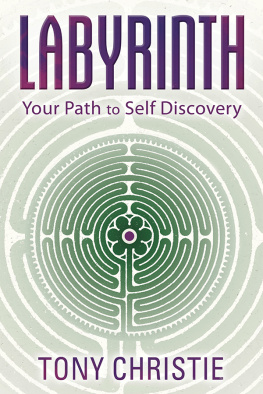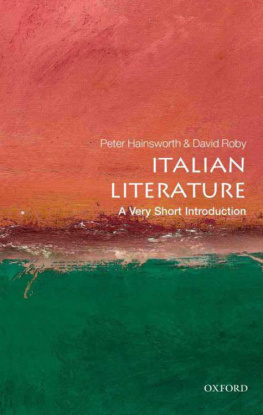Gaetano Cipolla - Labyrinth: Studies on an Archetype
Here you can read online Gaetano Cipolla - Labyrinth: Studies on an Archetype full text of the book (entire story) in english for free. Download pdf and epub, get meaning, cover and reviews about this ebook. year: 1987, publisher: Legas, genre: Religion. Description of the work, (preface) as well as reviews are available. Best literature library LitArk.com created for fans of good reading and offers a wide selection of genres:
Romance novel
Science fiction
Adventure
Detective
Science
History
Home and family
Prose
Art
Politics
Computer
Non-fiction
Religion
Business
Children
Humor
Choose a favorite category and find really read worthwhile books. Enjoy immersion in the world of imagination, feel the emotions of the characters or learn something new for yourself, make an fascinating discovery.
- Book:Labyrinth: Studies on an Archetype
- Author:
- Publisher:Legas
- Genre:
- Year:1987
- Rating:4 / 5
- Favourites:Add to favourites
- Your mark:
- 80
- 1
- 2
- 3
- 4
- 5
Labyrinth: Studies on an Archetype: summary, description and annotation
We offer to read an annotation, description, summary or preface (depends on what the author of the book "Labyrinth: Studies on an Archetype" wrote himself). If you haven't found the necessary information about the book — write in the comments, we will try to find it.
Labyrinth: Studies on an Archetype — read online for free the complete book (whole text) full work
Below is the text of the book, divided by pages. System saving the place of the last page read, allows you to conveniently read the book "Labyrinth: Studies on an Archetype" online for free, without having to search again every time where you left off. Put a bookmark, and you can go to the page where you finished reading at any time.
Font size:
Interval:
Bookmark:
Labyrinth: Stusied on an Archetype
Gaetano Cipolla
Labyrinth:
Studies on an Archetype

Copyright 1987 Legas
No part of this book may be translated or reproduced in any form, by print, photoprint, microfilm, microfiche, or any other means, without the written permission from the copyright holder.
Canadian Cataloging in-Publication Data
Cipolla, Gaetano 1937-
Labyrinth: studies on an Archetype
ISBN 0-921252-00-5
1. Labyrinths in Literature. 2. Italian literature--
History and Criticism. I. Title
PN56.L23C46 1987 850.93 C88-090026-1
Printed and Bound in Canada
On the cover Domenico di Michelinos painting of Dante illustrating his work, in Santa Maria del Fiore, Florence. Illustrations are by Gustave Dor.
For information and for orders,write to Legas:
P.O. Box 149 3 Wood Aster Bay
Mineola, New York Ottawa, Ontario
11501, USA K2R 1D3 Canada Legaspublishing.com
To my family
INTRODUCTION 9
Psychological Implications of the Myth of Heseus 13
Labyrinthine Imagery In Petrarch 37
Petrarchs Laura And The Great Mother Archetype 67
Dantes Ulysses: A Case of Inflation? 91
Luigi Pirandello: The Poetics of the Labyrinth 113
Rhetorical Strategies In Calvinos Narrative 131
Belcastro: A Modern Rite of Passage 143
Selected Bibliography on Labyrinths 151
INDEX OF NAMES 155
The studies collected in this volume are the results of an abiding interest in the labyrinth, dating back to the mid seventies. The first three essays, Psychological Implications of the Myth of Theseus, Labyrinthine Imagery in Petrarch, and Petrarchs Laura as the Great Mother Archer type, are based on essays published respectively in La Fusta, Italica, and Gradiva.
These three studies have undergone a great deal of revision. In general, I have revised the articles for bibliographic and stylistic consistency, as well as for content matter in order to present an integrated and organic discussion of the subject. Moreover, in essays II and III, I have added English translations for the numerous Latin quotations. The last four studies that appear in this volume were written at different times during the past few years. Dantes Ulysses: A Case of Inflation? grew out of a symposium held at SUNY Stony Brook. I had been asked to discuss lungs approach to literary works and rather than write an expository essay on the subject, I chose to demonstrate it through the analysis of a well known passage from the Inferno . The study was never published and is presented here for the first time in a completely rewritten form and seen from a different perspective.
The study on the late Italo Calvino, Rhetorical Strategies in Calvinos Narrative, as well as Fausto Gianfranceschis A Modern Rite of Passage, develop a discourse initiated in my earlier critical activity for La Parola del Popolo.
Finally, The Poetics of the Labyrinth, grew out of my interest for the labyrinthine aspects of Pirandellos work, which I had examined in Limmagine del labirinto in Luigi Pirandello, published in La Parola del Popolo. The present study is a complete re-elaboration of the research previously done. I presented a shorter version of the article, entitled La poetica del labirinto in Pirandello, at the Pirandello International Conference held at the Catholic University of Louvain, Belgium, in May 1986, which will soon be published by Bulzoni Editore as pan of the proceedings.
*****
The eight studies collected in this volume are intended as an organic presentation of the archetype of the labyrinth. Each of them adds something to our understanding of the subject. The first one, which consists of an analysis of the myth Theseus and of its psychological implications, may be considered as the theoretical basis for the studies that follow.
In essay II, I demonstrate that the labyrinth is for Petrarch a major image, that a number of other images under the heading of Captivity, the Way, and the Pythagorean Y, whose nature had not been recognized, are labyrinthine 1 and that together they constitute one of the most important 1 nuclei of Petrarchan imagery. Petrarch conceived love and worldly entanglements as a labyrinth and may have begun a tradition subscribed to by many poets. (I am thinking of Boccaccio, for example, whose Corbaccio bears the subtitle II laberinto damore or Tasso, in whose Gerusalemme liberata the garden in which Rinaldo is seduced by Armida is a labyrinth). In essay III, Petrarchs preoccupation for the labyrinth is further characterized as an obsession. Based on Depth Psychologys characterization of the labyrinth as an entangling and confusing representation of matriarchal consciousness, Laura, who appears as the Mistress of the labyrinth, was experienced by Petrarch as a manifestation of the Great Mother in her dual nature, that is, as a beneficent good mother and a petrifying and castrating Medusa.
In essay IV, my interpretation of Ulysses as a one- sided personality who has shunned the world of matter in favor of his quest for scientific knowledge, is based on a concept borrowed from Depth Psychology: Erich Neumann called it Inflation of the Patriarchal Principle. In the essay I examined Ulysses actions and measured them against the known manifestations of Inflation. Ulysses overvaluation of the powers of his ego consciousness inevitably were the cause of his being swallowed by the sea of the unconscious. This approach makes it possible to see Ulysses in a totally 51 new light and to examine Dantes attitudes from a different : perspective. From the Middle Ages, a period of time in which the labyrinth experienced one of its cyclical revivals, I go on to another era in which the image has become nearly ubiquitous, the modem era, which Nietzsche termed labyrinthine.
In essay V, I examined the convoluted world of Luigi Pirandello. The labyrinth is the most appropriate metaphor of Pirandellos work. It suited the personality of this creator of tortuous psychological knots and of a thousand situations without exits. The world was for Pirandellos characters a constricting place from which they sought vainly to escape. My study, however, goes beyond the description of Pirandellian labyrinths. It suggests that the labyrinth represents a form of poetics. Pirandello defended himself from the onslaught of madness in a disjointed and hopelessly labyrinthine world by creating labyrinths as a way of imposing order on chaos, as a way of controlling it and of minimizing its paralyzing influence. Cos (se vi pare) is seen as a perfectly symmetrical and lucidly conceived chaos: a labyrinth that reflects order through its precise geometrical external lines and chaos through the meandering and confusing path- ways of its internal space.
As the image par excellence of the mannerists, the labyrinth figures prominently also in the work of Italo Calvino, studied in essay VI. His work which seems to be a timely demonstration of post-modem literary theories, reveals, on closer examination of the rhetorical devices adopted, manneristic tendencies which manifest themselves through a penchant for what is irregular, fantastic, and, needless to say, labyrinthine. Calvino, like the experts of the ars combinatoria of the past, is presented here as a master labyrinth-maker.
In the last essay, I analyzed a novel which contains all the different elements that have been identified as important components of labyrinth as a realm in which initiatory rites take place. Fausto Gianfranceschis narrative presents itself as an uncanny embodiment of the same psychological problems discussed throughout the book: the labyrinth as a place of initiations, which involves spiritual death, rebirth, and transformation; the novel is a modem quest for the anima, that is, for the union between man and his soul, a quest for the wholeness that one finds at the center of the labyrinth, for if this universal archetype has been taken as signifying chaos, disorder and bewildering pathways, it also signifies illumination, order and symmetry.
Font size:
Interval:
Bookmark:
Similar books «Labyrinth: Studies on an Archetype»
Look at similar books to Labyrinth: Studies on an Archetype. We have selected literature similar in name and meaning in the hope of providing readers with more options to find new, interesting, not yet read works.
Discussion, reviews of the book Labyrinth: Studies on an Archetype and just readers' own opinions. Leave your comments, write what you think about the work, its meaning or the main characters. Specify what exactly you liked and what you didn't like, and why you think so.

